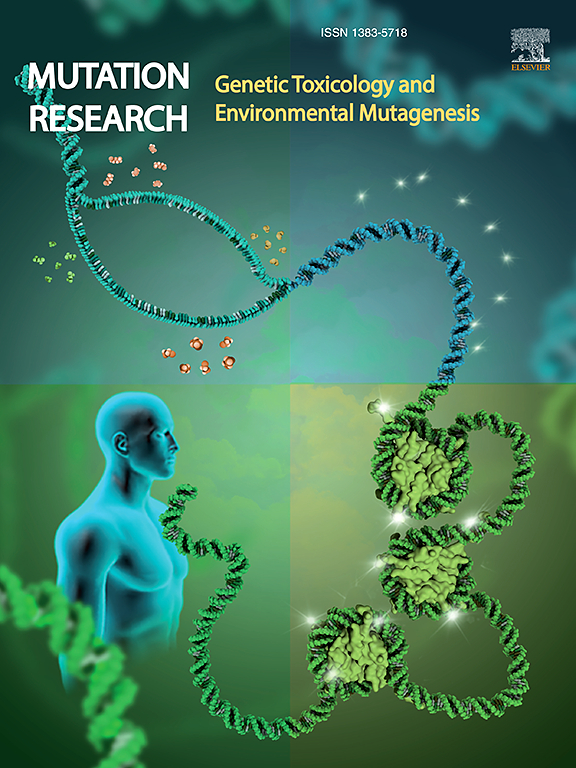人工智能/机器学习建模,提高体外和体内试验预测人类致癌性的能力
IF 2.5
4区 医学
Q3 BIOTECHNOLOGY & APPLIED MICROBIOLOGY
Mutation research. Genetic toxicology and environmental mutagenesis
Pub Date : 2025-02-26
DOI:10.1016/j.mrgentox.2025.503858
引用次数: 0
摘要
本研究旨在通过多任务学习(MTL)方法,利用先进的深度学习技术,特别是图神经网络(GNN),开发一种预测人类致癌性的计算机模型。MTL框架利用辅助任务,包括诱变性、遗传毒性、动物致癌性、雄激素和雌激素受体结合,以增强模型对人类致癌性主要任务的预测能力。使用三种不同的GNN架构以及各种辅助任务组合来评估性能指标的变化。结果表明,在预测人类致癌性方面,与单任务学习相比,多任务学习显著提高了GNN模型的预测性能。最佳MTL模型的曲线下面积为0.89,平衡精度为82%,灵敏度和特异性值分别为0.75和0.89。开发的多任务学习(MTL)模型在代表识别遗传毒性和非遗传毒性致癌物的检测任务上发挥作用,从而提高了模型预测人类致癌风险的能力。先进的GNN模型证明了在解决生物数据集中经常观察到的数据不平衡问题方面的有效性,减轻了通常倾向于一类而不是另一类的偏见。总的来说,这些结果强调了基于gnn的MTL模型在可靠的化学筛选和优先排序方面的前景,特别是在预测人类致癌性方面。本文章由计算机程序翻译,如有差异,请以英文原文为准。
AI/ML modeling to enhance the capability of in vitro and in vivo tests in predicting human carcinogenicity
This study aimed to develop an in silico model for predicting human carcinogenicity using advanced deep learning techniques, specifically Graph Neural Networks (GNN), through a multitask learning (MTL) approach. The MTL framework leveraged auxiliary tasks, including mutagenicity, genotoxicity, animal carcinogenicity, androgen and estrogen receptor binding, to enhance the model's predictive capabilities for the primary task of human carcinogenicity. Three distinct GNN architectures were used alongside various combinations of auxiliary tasks to evaluate the variations in performance metrics. Results demonstrated that multitask learning significantly enhances the predictive performance of GNN models compared to single-task learning for predicting human carcinogenicity. The best performed MTL model achieved an area under the curve of 0.89, along with a balanced accuracy of 82 %, and sensitivity and specificity values of 0.75 and 0.89, respectively. The developed multitask learning (MTL) models function on tasks that represent assays for identifying both genotoxic and non-genotoxic carcinogens, thereby enhancing the model's capability to predict human carcinogenic risk with greater accuracy. The advanced GNN models demonstrated effectiveness in addressing data imbalance issues frequently observed in biological datasets, mitigating the bias that typically favors one class over another. Overall, these results underscore the promise of GNN-based MTL models for reliable chemical screening and prioritization, particularly in predicting human carcinogenicity.
求助全文
通过发布文献求助,成功后即可免费获取论文全文。
去求助
来源期刊
CiteScore
3.80
自引率
5.30%
发文量
84
审稿时长
105 days
期刊介绍:
Mutation Research - Genetic Toxicology and Environmental Mutagenesis (MRGTEM) publishes papers advancing knowledge in the field of genetic toxicology. Papers are welcomed in the following areas:
New developments in genotoxicity testing of chemical agents (e.g. improvements in methodology of assay systems and interpretation of results).
Alternatives to and refinement of the use of animals in genotoxicity testing.
Nano-genotoxicology, the study of genotoxicity hazards and risks related to novel man-made nanomaterials.
Studies of epigenetic changes in relation to genotoxic effects.
The use of structure-activity relationships in predicting genotoxic effects.
The isolation and chemical characterization of novel environmental mutagens.
The measurement of genotoxic effects in human populations, when accompanied by quantitative measurements of environmental or occupational exposures.
The application of novel technologies for assessing the hazard and risks associated with genotoxic substances (e.g. OMICS or other high-throughput approaches to genotoxicity testing).
MRGTEM is now accepting submissions for a new section of the journal: Current Topics in Genotoxicity Testing, that will be dedicated to the discussion of current issues relating to design, interpretation and strategic use of genotoxicity tests. This section is envisaged to include discussions relating to the development of new international testing guidelines, but also to wider topics in the field. The evaluation of contrasting or opposing viewpoints is welcomed as long as the presentation is in accordance with the journal''s aims, scope, and policies.

 求助内容:
求助内容: 应助结果提醒方式:
应助结果提醒方式:


